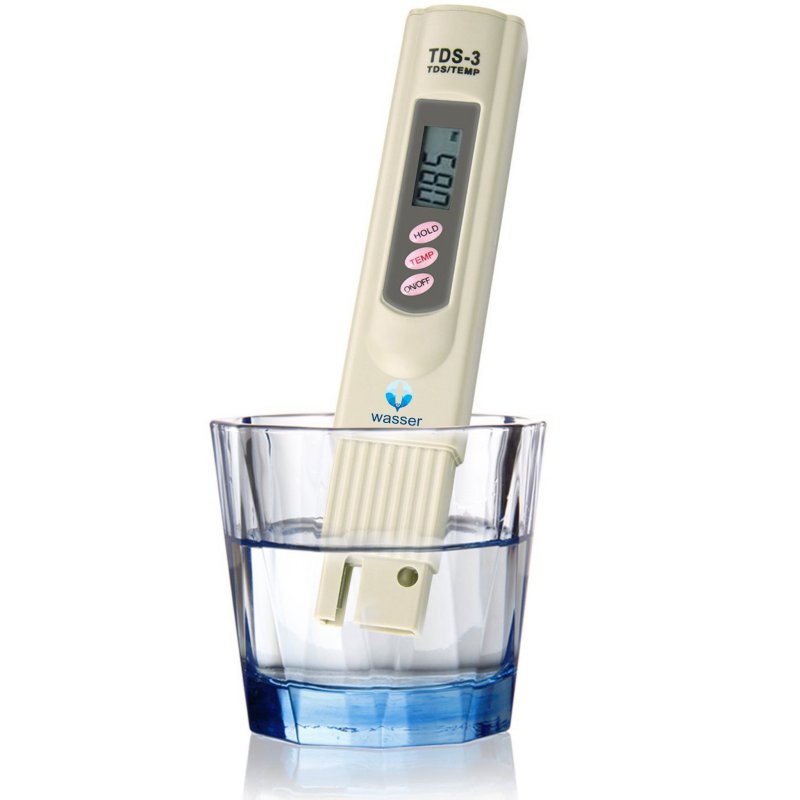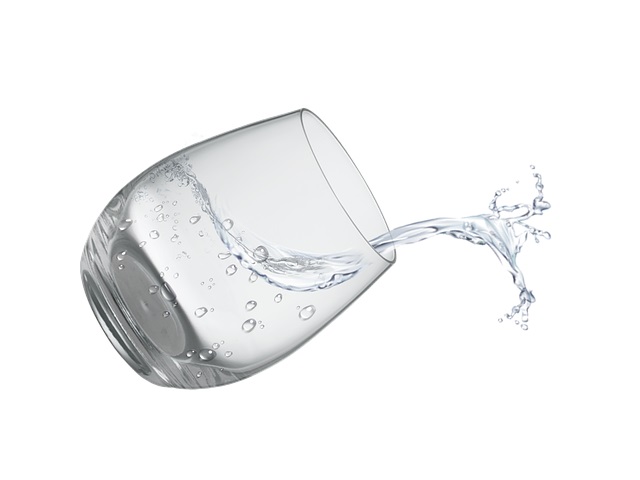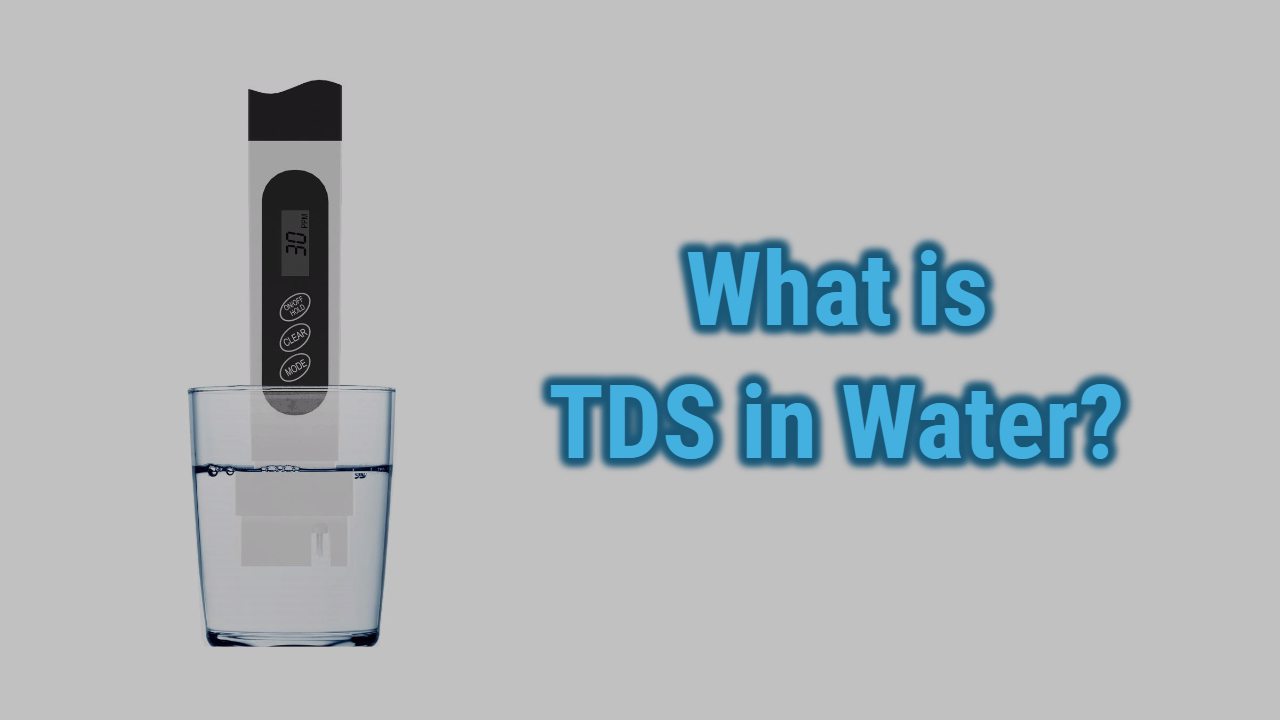Water is one of the substances that accepts or dissolves any other particles that are added into it or comes in contact with it. When it comes to finding out contaminants or a perfect filtration system for your house, you might have heard the term TDS often.
Now it is also important to know that the TDS can be mostly of two types, one that is hazardous to health and one that is not. You will learn everything you need to learn about TDS in this article.
Table of Contents
What is TDS?
To define TDS in one sentence, let us tell you that it is totally dissolved solids that are found in the water. This TDS includes inorganic salts, calcium, magnesium, potassium, and other contaminants like cations, and carbonates, nitrates, bicarbonates, chloride, sulfates, etc. You must be wondering where this TDS comes from. Well, the TDS is found in almost natural sources, and they turn water into hard water. The minerals in the water are also considered TDS.
The TDS from the water comes from the underground sewage, chemical waste, or the agricultural or urban waste that seeps into the earth. The rain or snow melts and seeps into the core of the earth, and that wastage is mixed or dissolved into the water.
Measuring the TDS

For measuring the TDS in the water, you can use a TDS meter to measure it. If the amount of TDS is something between 300-500 ppm, then it can be considered normal. One thing you need to know is that you cannot know which contaminants are dissolved in the water with the help of a TDS meter.
It will only show you the amount in ppm. If you want to know the exact contaminants or minerals that are totally dissolved in the water, you will have to get the water report done. Sometimes the TDS in the water is tested with a gravitative method. In which the water is poured on the clean surface, and when it is evaporated, it leaves the residue of all dissolved substances on the surface. Whatever that has remained on the surface is then put through different kinds of tests and examined further.
Measuring the TDS helps you identify what kind of filtration or softener system you will need to remove those exact contaminants or minerals. Clearly, the high amount of TDS in the water affects the taste and the odor of the water, and sometimes it even makes the water contagious. When there is a low amount of TDS in the water, there will not be any significant change you can notice with taste or smell.
Why should I measure TDS in the water?

If the TDS level in the water increases, it can be harmful to drink. If you wondered what could happen if you were to drink water with a high amount of TDS in it, here’s the list of few things that can be caused by it.
- If there is dissolved silver among the other contaminants, consuming that can cause skin discoloration. Even though it is really rare that there is dissolved silver in the water, you can never be too careful about the water you drink.
- TDS in the water affects the aesthetics of the water. If there is a high amount of TDS in the water, it will affect the taste of the water as well as there will be some kind of smell coming from it.
- TDS can be one of the reasons that your water is hard. The hard water will reduce the lifespan of the appliances that use water. Besides that, the hard water will make laundry dull, block the skin pores, and sometimes, in the long run, it even blocks your plumbing lines.
- Suppose you are using the high contaminated TDS water for bathing purposes. In that case, the contaminants of the water, when mixed up with the soap, might cause different effects and reactions to your skin, causing diseases.
- Although the minerals in the drinking water are sometimes beneficial for you to drink, depending upon the number of minerals and other contaminants, if by any chance those minerals react with other contaminants in the water, you will face some digestive issues.
- Regular consumption of highly contaminated water with a high amount of TDS can cause diseases like coronary heart disease, cardiovascular disease, etc.
It is wise to make sure that the water that you drink is perfectly healthy for you to consume. Here is the table that might tell you what amount of TDS is good in the water and what amount of TDS is harmful and needs to be removed according to WHO’s guidelines.
| Amount of TDS (Milligrams per liter) | Remarks |
|---|---|
| Less than 300 | Good, Consumable |
| 300 to 600 | Fair, Consumable |
| 600 to 900 | Poor. Can be avoided for consumption |
| 900 to 1200 | Unacceptable, Avoid consumption |
| Higher than 1200 | Highly unacceptable and non-consumable |
Besides this, EPA also has given guidelines that the water that shows 500 ppm is alright and healthy to drink
Ways You Can Remove TDS from The Water

If you have tested the water and figured out the number of contaminants and measures in the water, here are few ways you can choose to remove TDS from the water that you use.
1. Reverse Osmosis
Reverse Osmosis systems (Read our reviews here) are one of the ways you can remove all the dissolved solids from the water. Usually, the pores in the RO membrane are as small as 0.0001 microns, which can stop all the other dissolved particles in the water from going further. Reverse osmosis systems are the most effective ones to make the water extremely pure.
You can always pre-filters with RO membrane as your filtration system for lengthening the life of your RO membrane. These pre-filters can include sediment filters, carbon blocks, etc. It is necessary to know that Reverse Osmosis removes all the necessary minerals as well. If you are keen on consuming minerals in your water, you might need to add a remineralization post filter with your Reverse Osmosis system.
2. Deionization
This kind of process is done by electrically charging the ions in the water. The molecules in the water are either negatively or positively charged and then removed from the water. The ions that are positively charged are called ‘cations,’ and the ions that are negatively charged are called ‘anions.’
The deionization process is done with the help of resin beads or salt. These resins are small plastic beads, and the ionized particles attach themselves to the resins in the system. These ionized solids do not go back into the water. If you choose to install a deionization system for removing TDS from the water, it is necessary to know that you will have to do the backwashing of the system every few weeks.
3. Distillation
In this process, the water is boiled to the vapor; this vapor then rises to a cool surface and collects into the water. With the distillation process, all the dissolved solids remain in the tank. When water is vaporized, these dissolved solids are not. Depending upon the needs, different types of distillers are available you can get from the market. Water distillation removes contaminants like arsenic, fluoride, lead, mercury, radium, and many other biological contaminants.
Conclusion
It is necessary to know that all the TDS (totally dissolved solids) are not necessary contaminants, sometimes it can even be minerals and metals. You can use a TDS meter to measure the amount of TDS in the water, or you can get a detailed water report. If there is a low amount of TDS in the water, it is perfectly safe for you, but there is a high amount of it, then the given guidelines, you can get a system for clearing out the TDS from the water.
If there is a low TDS level in the water and you want it to be removed, you can even use carbon block filters to remove the low-level TDS from the water. While choosing these filters, you can look out for NSF certifications, filter lifespan, etc.
Always make sure that the water that you are drinking is safe and TDS free ensuring the possible healthy water for consumption.
